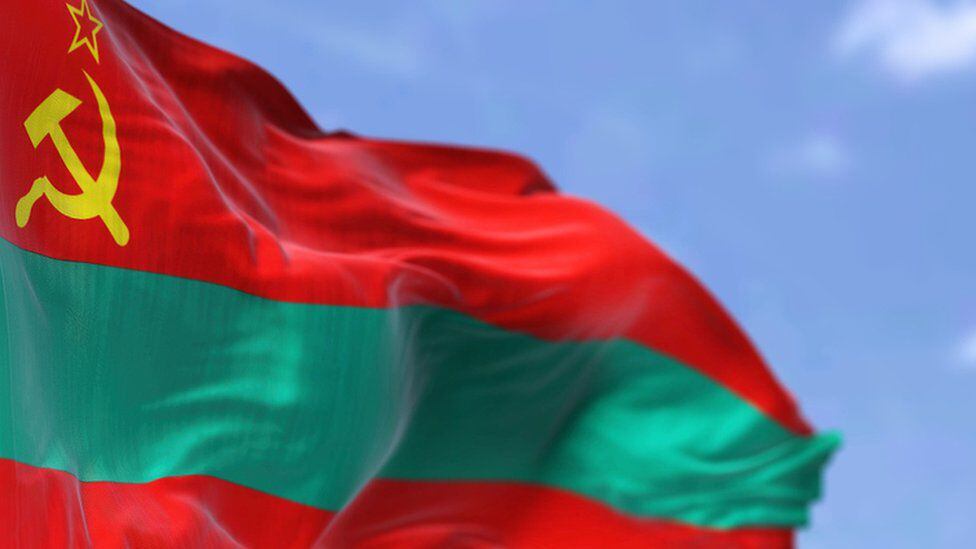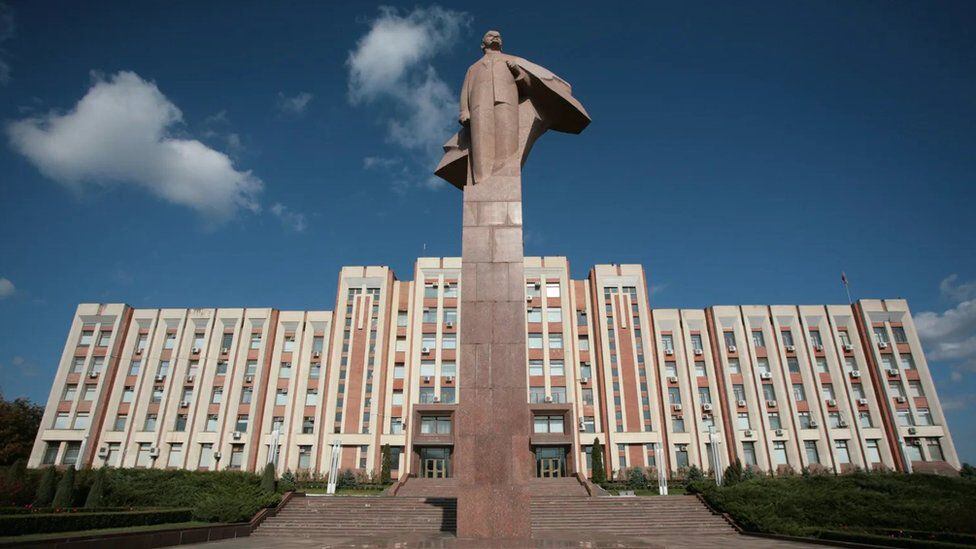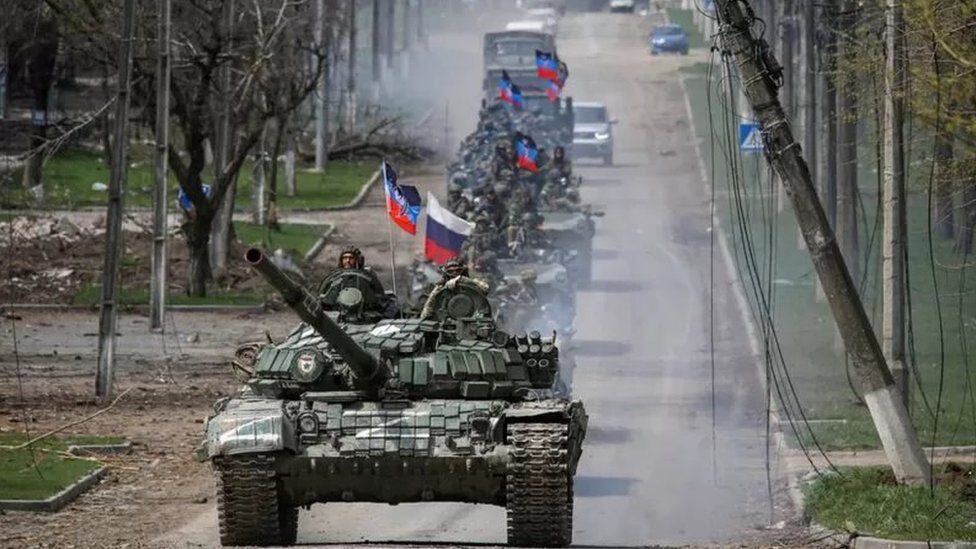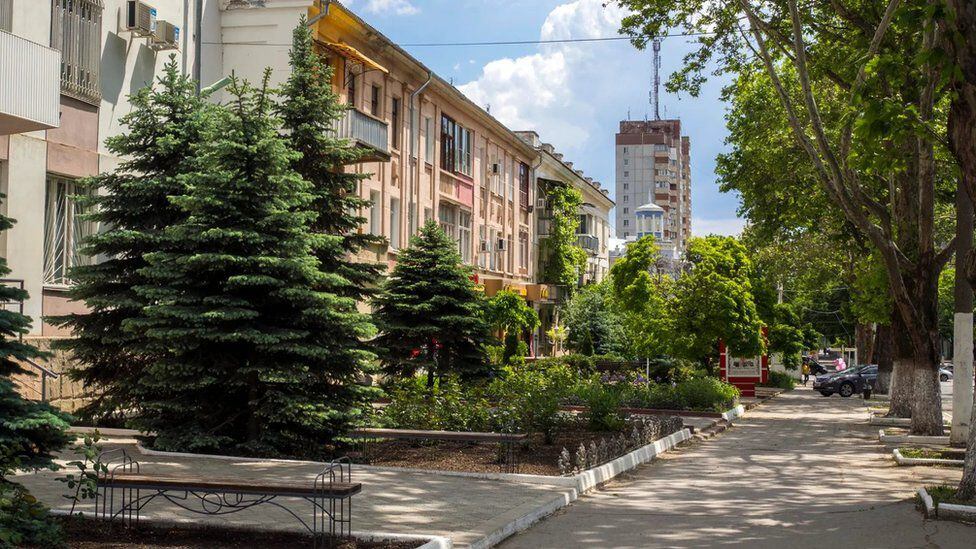On Friday, April 23, some comments by Russian General Rustam Minnekayev caused alarm in moldova.
The acting commander of Russia’s Central Military District suggested that taking control of southern Ukraine would serve as a corridor for Moscow to gain access to Transnistria, a pro-Russian breakaway region of Moldova.
LOOK: “We want to see Russia weakened”: the strong statements of the US Secretary of Defense after a visit to Ukraine
“Control over the south of Ukraine is another way to reach Transnistria, where there are also acts of oppression against the Russian-speaking population”, stated Minnekaev, according to the Russian news agency interface.
His speech prompted Moldova to express “deep concern” by summoning the Russian ambassador to the country and since then the breakaway region has suffered several incidents.
What’s going on
On Monday, a building in the center of Tiraspol, the regional capital, was damaged after a grenade launcher attackand on Tuesday there were explosions at the radio-television center in the town of Maiak, near the border with Ukraine.
Following the latest events, the President of Moldova, Maia Sandu, called a meeting of the country’s Supreme Security Council (SSC).
The Office for Reintegration of Moldova assures that the explosions sought to “create pretexts to test the security situation in the Transnistria region, which not controlled by the authorities constitutional”.
For his part, Ukrainian President Volodymyr Zelensky warned Tuesday night that “Russia’s war against Ukraine is only the beginning.”
“Russia’s ultimate goal is not just to seize the territory of Ukraine, but dismember all of central and eastern Europe and deal a blow to global democracy,” he added.
Local authorities assured this Wednesday that during the night of Tuesday there were shots in a town that houses a large ammunition depot.
They specified that the drone attacks had been launched from Ukraine.
But kyiv claims it is a “false flag” operation aimed at destabilizing the region and dragging it into war.
Zelensky has previously accused the Russian special services of being behind the attacks that are shaking Transnistria.

But what is this region like and why is it of interest to the Kremlin?
soviet past
Transnistria is a small region bordering Ukraine that is located to the west of Moldova, a country that was part of the Soviet Union (USSR) from 1940 until its dissolution in the early 1990s.
Shortly before the total collapse of the former communist power, a conflict broke out there between the newly independent Republic of Moldova and separatist groups in Transnistria, who wanted maintain ties with Moscow.
The civil war did not last long, but since the ceasefire in July 1992, about 1,500 Russian troops have been stationed to “keep the peace” in the territory.
With the end of the conflict, Transnistria declared its independence.
But apart from other disputed regions like Abkhazia, Nagorno-Karabakh and South Ossetia, no United Nations member state recognizes it.
Great autonomy
It has its own Constitution, government, army, currency and even passports, which are practically useless.
It is so autonomous that even the Moldovan authorities admit that they have no control over the territory.

The majority of its population of around 500,000 inhabitants has double or triple nationalitywhether Russian, Moldovan or Ukrainian.
Less than 70 km southeast of Chisinau, the capital of Moldova, lies Tiraspol with its 130,000 inhabitants, a small city often described as “stuck in the USSR”.
In this regional capital there is no shortage of streets named after communist idols or important dates from the Soviet era, nor is there a big statue of lenin which stands in front of the brutalist-style local Parliament building.
Links with Russia
Since Transnistria declared its independence 30 years ago, Tiraspol’s population has shrunk by at least a third.
Most of its inhabitants have left to seek work abroad, many in Russia, as economic prospects plummeted after the fall of the USSR.
Salaries here are even lower than in the rest of Moldova, which is one of the poorest countries in Europe.
Although the three predominant ethnic groups in Transnistria (Russians, Ukrainians and Moldovans) are similar in size, Russian is the dominant language.

Also, Russian flags fly alongside those of Transnistria – the only one in the world that still includes a hammer and sickle – on many buildings in the city.
A large weapons depot
Transnistria is also known for hosting the largest Cold War arsenal: a depot with some 20,000 tons of weapons and ammunition.
Although according to its critics, an explosion in this place could generate a detonation equivalent to that of the Hiroshima bomb, other experts point out that this is unlikely, and that they are old and disused weapons.
Kolbasna Weapons Depot, near the border with Ukrainewas erected in the 1940s, when Moldova was still part of the Soviet Union.
With the end of the Cold War, it became the place where the weapons that the Soviet forces brought with them when they withdrew from East Germany, Czechoslovakia and other countries of the former communist bloc were stored.
At a summit of the Organization for Security and Cooperation in Europe (OSCE), held in 1999 in Istanbul, Moscow agreed to withdraw part of the ammunition and weapons it kept in Transnistria.

Between 2000 and 2004, it took entire trainloads of weapons and ammunition from the Kolbasna depot, where by then it was estimated that there were some 40,000 tons of this material.
That process, however, was paralyzed by decision of the Transnistrian authorities and has not been able to be reactivated.
In September 2021, in her annual address to the UN General Assembly, the President of Moldova, Maia Sandu, reiterated his request for the withdrawal of troops from Transnistria and the elimination of weapons and ammunition stored in Kolbasna.
But Moscow has refused to allow other forces to take over the security of material or peacekeeping tasks in the area.
Analysis of Ilya Barabanov
BBC Russian Service Correspondent
After two days of explosions in Transnistria, the situation in this self-proclaimed republic began to look a lot like what happened in Donbas before the invasion.
On April 22, Major General Rustam Minnekanov, deputy commander of the Central Military District, said that the Russian army intends, as a result of the “second phase of the special operation”, to create a land corridor to Transnistria, where allegedly they have been seen. “cases of oppression” against the Russian-speaking population.
But who oppresses them is a great unknown.
For almost 30 years, the territory of Transnistria has enjoyed considerable autonomy within Moldova.
The last hostilities took place there in August 1992, but since then its inhabitants have always got along very well with all their neighbors.
Unlike Ukraine, Moldova has not seriously reorganized or rearmed its armed forces, and Moldovan politicians have long joked about the ineffectiveness of its military.
The first weeks of the war in Ukraine were viewed with a lot of nervousness in Moldova, with many in this country fearing that a quick victory for Putin could inciting the Russian army to occupy Moldova.
But the Russian army failed to advance quickly, its troops bogged down in positional battles in eastern Ukraine.
Interrogated by the BBC, the Russian Defense Ministry assured that it was investigating General Minnekaev’s statements, but did not deny that Vladimir Putin’s government plans to create a corridor through southern Ukraine to Transnistria.
For his part, the Vice Minister of Foreign Affairs of RussiaAndrey Rudenko stated that Moscow hoped to avoid a situation where it would have to intervene in the regiona statement that was met with fear and skepticism in Moldova.
Like in UkraineFor now, the Kremlin’s true plans for Moldova and its pro-Russian breakaway region of Transnistria are unknown.
Source: Elcomercio

:quality(75)/cloudfront-us-east-1.images.arcpublishing.com/elcomercio/GIZDCNZNGA2C2MRXKQYDAORSGI.jpg)





